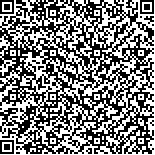| 摘要: |
| 针对目前反演遥感透明度的方法多是经验方法,而半分析方法运用在二类水体时,由于分析参数较难获取导致应用较少等问题,本文在缺少相关光学参数实测数据的情况下,基于GOCI卫星影像数据及实测透明度数据开展两种半分析透明度反演模型的对比与分析。首先选用555 nm和660 nm两种参考波段的QAA-v6算法分别反演水体固有光学参数,代入到Lee15和Jiang19两种半分析模型中定量反演胶州湾水域透明度。结果表明,660 nm作为参考波段的Lee15模型反演精度更高,误差更小(R2=0.771,MAPE=0.137,RMSE=0.331)。为进一步探究各模型在不同透明度范围内的反演精度,将透明度范围分成3段(0.5~1.5,1.5~2.5,2.5~3.5 m)分别进行误差分析后发现,660 nm Lee15模型在各分段均达到最佳精度。所以该模型能够为胶州湾这种二类水体的透明度反演提供一条有效途径。 |
| 关键词: 水体透明度 参考波段 QAA算法 遥感反演 |
| DOI:10.11759/hykx20200619002 |
| 分类号:P722.5 |
| 基金项目:地理信息工程国家重点实验室开放研究基金资助项目(SKLGIE2017-Z-3-3);国家重点研发计划课题(协作)(2018YFC1405903);测绘地理信息公益性行业科研专项(201512034) |
|
| Comparison and analysis of two semi-analytical inversion models for water transparency |
|
GAO Lei1, HU Peng1, ZHU Jin-shan1,2,3
|
|
1.Geomatics College, Shandong University of Science and Technology, Qingdao 266590, China;2.State Key Laboratory of Geographic Information Engineering, Xi'an 710054, China;3.Key Laboratory of marine mapping technology, Ministry of natural resources, Qingdao 266590, China
|
| Abstract: |
| Currently, most transparency inversion methods utilized are empirical. On the other hand, semi-analysis method is applied to ClassⅡwater bodies, which makes obtaining the analytical properties difficult leading to few applications. In the absence of relevant optical properties, this paper compares and analyzes two semi-analytical transparency inversion models based on the GOCI satellite image data and the measured transparency data. First, a QAA-v6 algorithm with 555 nm and 660 nm reference wavelengths is used to invert the inherent optical properties of the waterbody. This is then substituted into the Lee15 and Jiang19 semi-analytical models to quantitatively invert the transparency of Jiaozhou Bay waters. Results show that the Lee15 model with 660 nm as the reference band has higher accuracy and lower error (R2 = 0.771, MAPE = 0.137, and RMSE = 0.331). To further investigate the inversion accuracy of each model in different transparency ranges, the transparency range is divided into three segments: (1) 0.5-1.5, (2) 1.5-2.5, and (3) 2.5-3.5 m. The corresponding error analysis is conducted separately. It is found that the 660 nm Lee15 model achieves the best accuracy in each segment. This study proves that the proposed model can provide an effective way for the transparency inversion of a Class II water body like Jiaozhou Bay. |
| Key words: Water transparency reference band QAA algorithm remote sensing inversion |
